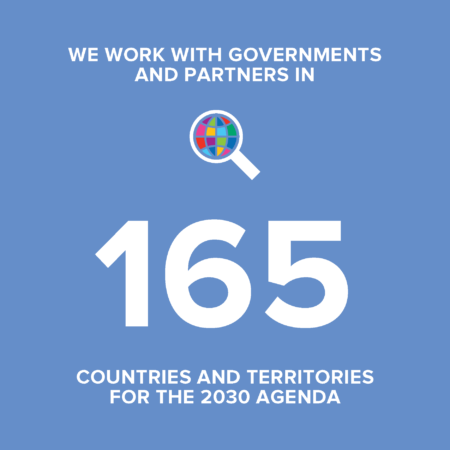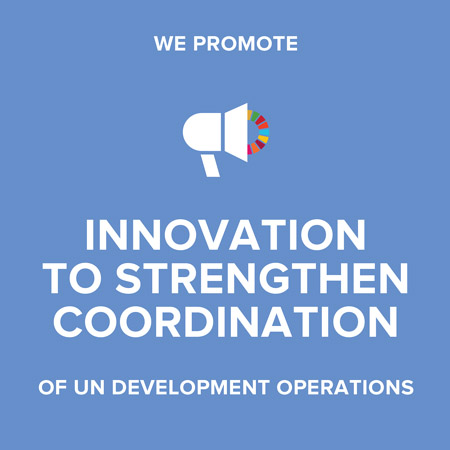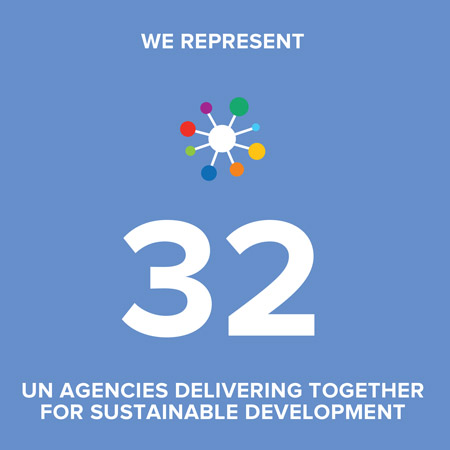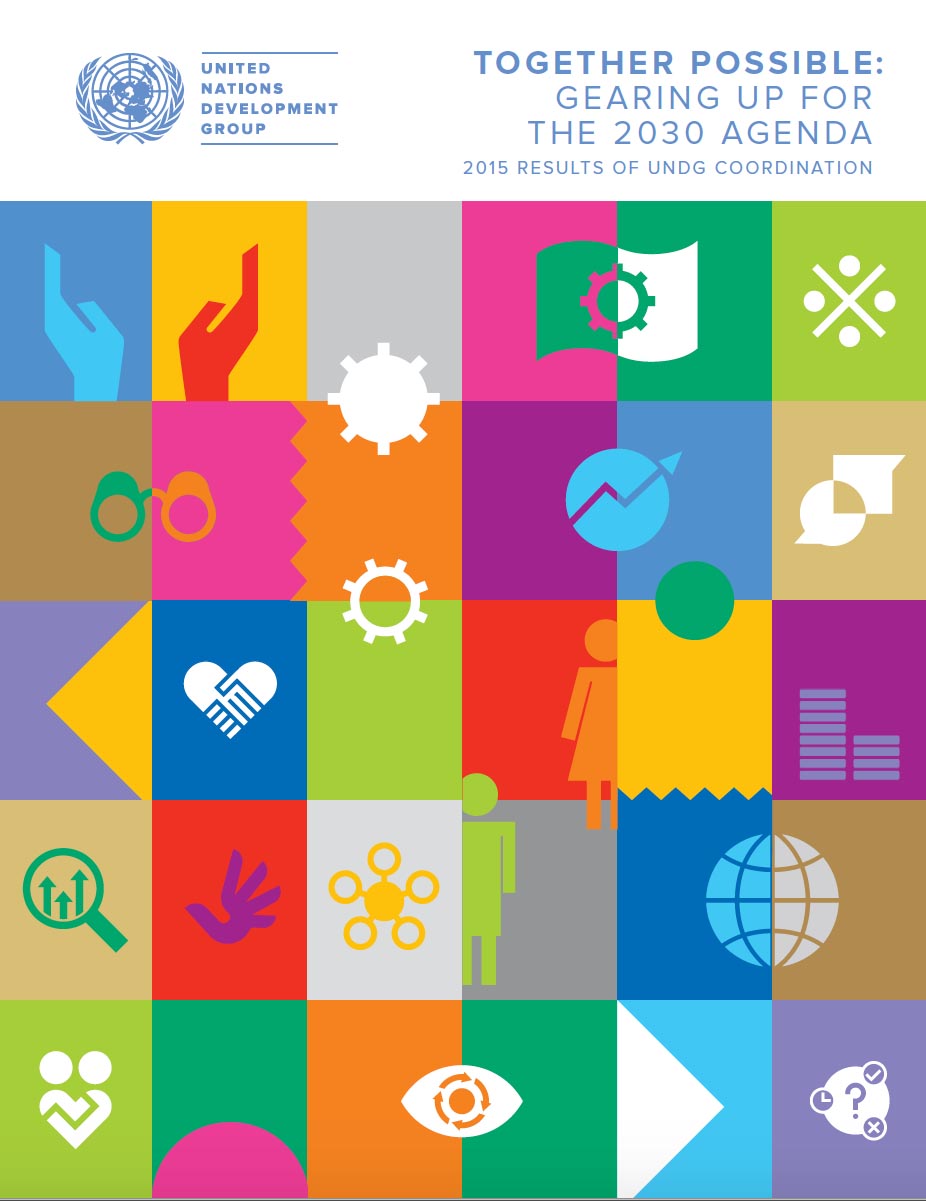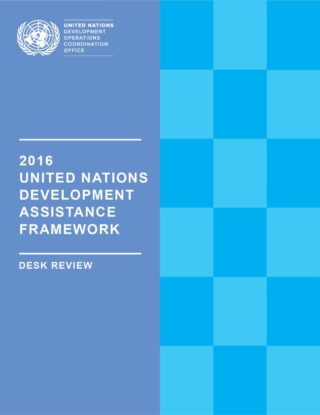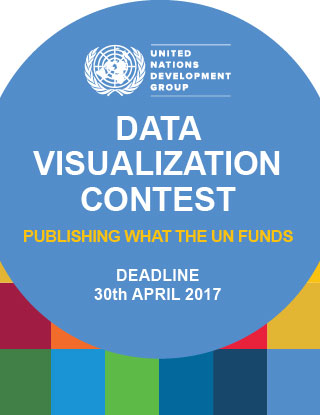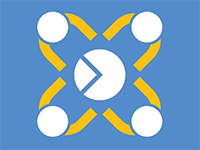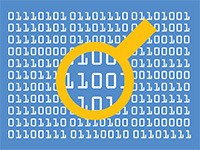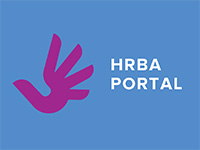BY Richard Bailey | 04 May 2017
In the development field, donors can provide funds to the UN through pooled funds, a special type of mechanism that has made our work – reaching the right people at the right time with the right resources – much easier. Thanks to pooled funds, we can support humanitarian interventions, peacebuilding, development and climate change efforts in an accountable and a flexible way.
Accountable to tax payers, flexible in the field
To ensure flexibility in complex situations such as in Iraq 2004, the money donors contribute is pooled together and administered centrally by a UN fund, rather than being earmarked to a specific UN agency. Once a fund-allocation decision is made, the money is passed from the central UN fund to the UN entity responsible for implementing the relevant programme.
But in a short period of time (since 2004), they have impacted our financing systems: They now account for 8 percent of the total funding for the UN’s operational activities and they are expected to grow in the coming years.
This is just the beginning.
The drive for more joined up work across the UN and with partners is gaining momentum. UN pooled financing mechanisms will play an increasingly strategic role in financing the 2030 Agenda for Sustainable Development and you can see our analysis here.
Where does the money go?
For the first time, we have begun to publish UN pooled-fund data using the International Aid Transparency Initiative Standard (IATI). We adopted the IATI data standard because it helps us compare funds across the UN. At the same time it enables us to get our data on pooled funding out there in the public. Publishing our data in IATI means that we have a reliable, machine readable way of ensuring that high quality financial data on pooled funds is published once and can be used whenever and wherever it is needed.
The UN Development Operations Coordination Office and the UN Multi-Partner Trust Fund Office, the center of expertise on pooled financing mechanisms in the UN system, partnered on this major step to make our transactions transparent.
Like much of the drive for the more than 500 publishers already using the IATI data standard, publishing data is only the first step. The goal is to make sure this data is used, so dig in and let us know how you use it!
Photo:© 2010 Arne Hoel/World Bank
BY Per Bjälkander | 03 May 2017
Have you ever read an article about the failures of UN peacekeeping? And wondered why the UN invests significant money towards sending foreigners into war-torn countries, only to get caught up in stories of sex abuse and some peacekeepers hiding in their bases when the going gets tough?
The Democratic Republic of the Congo (DRC) is not new to such stories. When President Mobutu was overthrown in 1997 after over 30 years of autocratic rule, the country tumbled into chaos with an increased number of armed groups. This led to internal and regional conflict involving many neighboring countries. Despite several peace agreements, the country is struggling to recover from this history of conflict.
Old problems continue year after year. State building, where the international community tries to support the government in developing institutions, is still ongoing. Several presidential elections have been postponed. Armed conflict has escalated in new parts of the country such as the Kasai provinces, where we recently lost UN workers. There are currently approximately 2.1 million people who have been forced to leave their homes due to violent conflict.
Collaborating for a cause
We at the UN are asking ourselves: how do we help break this trend? UN civilian and military peacekeepers (MONUSCO) have been in the country 18 years and have tremendous capacity. The United Nations in the Democratic Republic of Congo includes over 20 other UN organizations that are also present in the DRC, and many work on similar issues as the peacekeeping forces. The problem is that there isn’t enough collaboration between the UN organizations and the peacekeepers.
However, with the new global consensus as agreed in the 2030 Agenda for Sustainable Development, there is an understanding that development actors, peacekeepers and humanitarian workers need to work together. To sustain peace, we need functioning schools, social services and local councils just as much as we need “blue helmets.”
The UN in the DRC wants to innovate by finding ways to take advantage of the peacekeepers’ presence to implement the Sustainable Development Goals (SDGs), focusing on promoting peace, justice and strong institutions.
Peace keeping and development agencies working together
Our main objective is to ensure that MONUSCO and the UN country team have a joint strategy that builds on what each one does best.
The UN Development Assistance Frameworks (UNDAFs) need to be in line with national priorities and capture the SDGs. Therefore, the UN decided to first support the government in adapting the SDGs to the Congolese context, in order to prepare a new National Development Plan. For SDG 16 which aims to promote peace, justice and strong institutions, the government prioritized reducing violence, fighting corruption and good governance.
To build on this work, the UN also supports the Ministry of Planning in arranging a meeting with government officials, specifically on the topics of peace, justice, and strong institutions. With the help of MONUSCO, government officials presented and discussed baseline data for reducing violence, fighting corruption and good governance. It is critical to know where we stand in order to measure future impact.
What’s next?
The UNDAF has been postponed by one year due to significant political issues and delays in drafting a national development plan that the UN could align itself with. The year will provide extra time for a discussion between the UN and the government on strategic priorities.
In the meantime, the UN is putting in place “joint task forces” on specific themes where MONUSCO and the UN country team have a common interest. Inspired by the call for new ways of working at the World Humanitarian Summit, we are working together on reintegration of ex-combatants, displacement, justice, gender and human rights. Stay tuned for more about this in future posts.
In countries where violent conflict exists, let’s remember that teaching a young person a skill is peacekeeping, and getting a young combatant out of war is development.
Photo: UNHCR/B.Sokol

 UNDGSustainable Development Goal 1: End poverty in all its forms everywhere
UNDGSustainable Development Goal 1: End poverty in all its forms everywhere UNDGSustainable Development Goal 2: End hunger, achieve food security and improved nutrition, and promote sustainable agriculture
UNDGSustainable Development Goal 2: End hunger, achieve food security and improved nutrition, and promote sustainable agriculture UNDGSustainable Development Goal 3: Ensure healthy lives and promote well-being for all at all ages
UNDGSustainable Development Goal 3: Ensure healthy lives and promote well-being for all at all ages UNDGSustainable Development Goal 4: Ensure inclusive and equitable quality education and promote lifelong learning opportunities for all
UNDGSustainable Development Goal 4: Ensure inclusive and equitable quality education and promote lifelong learning opportunities for all UNDGSustainable Development Goal 5: Achieve gender equality and empower all women and girls
UNDGSustainable Development Goal 5: Achieve gender equality and empower all women and girls UNDGSustainable Development Goal 6: Ensure availability and sustainable management of water and sanitation for all
UNDGSustainable Development Goal 6: Ensure availability and sustainable management of water and sanitation for all UNDGSustainable Development Goal 7: Ensure access to affordable, reliable, sustainable and modern energy for all
UNDGSustainable Development Goal 7: Ensure access to affordable, reliable, sustainable and modern energy for all UNDGSustainable Development Goal 8: Promote sustained, inclusive and sustainable economic growth, full and productive employment, and decent work for all
UNDGSustainable Development Goal 8: Promote sustained, inclusive and sustainable economic growth, full and productive employment, and decent work for all UNDGSustainable Development Goal 9: Build resilient infrastructure, promote inclusive and sustainable industrialisation, and foster innovation
UNDGSustainable Development Goal 9: Build resilient infrastructure, promote inclusive and sustainable industrialisation, and foster innovation UNDGSustainable Development Goal 10: Reduce inequality within and among countries
UNDGSustainable Development Goal 10: Reduce inequality within and among countries UNDGSustainable Development Goal 11: Make cities and human settlements inclusive, safe, resilient and sustainable
UNDGSustainable Development Goal 11: Make cities and human settlements inclusive, safe, resilient and sustainable UNDGSustainable Development Goal 12: Ensure sustainable consumption and production patterns
UNDGSustainable Development Goal 12: Ensure sustainable consumption and production patterns UNDGSustainable Development Goal 13: Take urgent action to combat climate change and its impacts
UNDGSustainable Development Goal 13: Take urgent action to combat climate change and its impacts UNDGSustainable Development Goal 14: Conserve and sustainably use the oceans, seas and marine resources for sustainable development
UNDGSustainable Development Goal 14: Conserve and sustainably use the oceans, seas and marine resources for sustainable development UNDGSustainable Development Goal 15: Protect, restore and promote sustainable use of terrestrial ecosystems, sustainably manage forests, combat desertification and halt and reverse land degradation, and halt biodiversity loss
UNDGSustainable Development Goal 15: Protect, restore and promote sustainable use of terrestrial ecosystems, sustainably manage forests, combat desertification and halt and reverse land degradation, and halt biodiversity loss UNDGSustainable Development Goal 16: Promote peaceful and inclusive societies for sustainable development, provide access to justice for all and build effective, accountable and inclusive institutions at all levels
UNDGSustainable Development Goal 16: Promote peaceful and inclusive societies for sustainable development, provide access to justice for all and build effective, accountable and inclusive institutions at all levels UNDGSustainable Development Goal 17: Strengthen the means of implementation and revitalise the global partnership for sustainable development
UNDGSustainable Development Goal 17: Strengthen the means of implementation and revitalise the global partnership for sustainable development